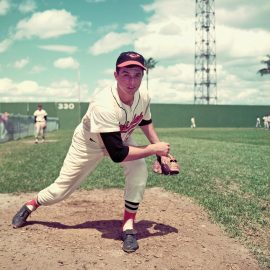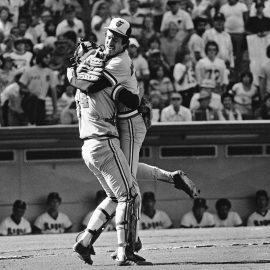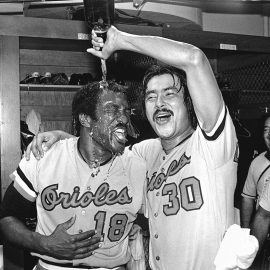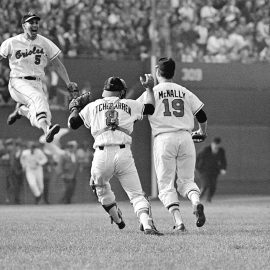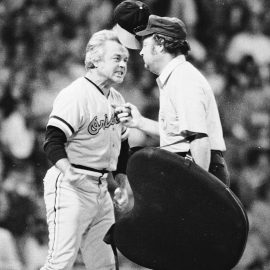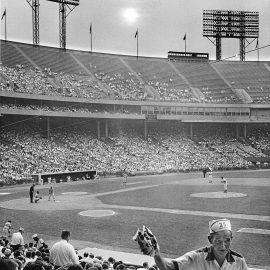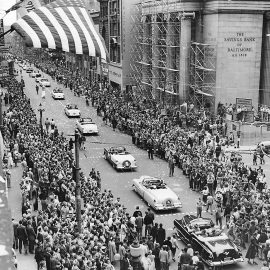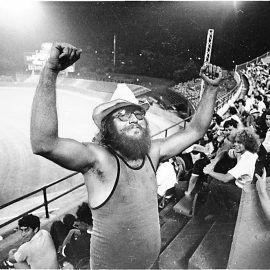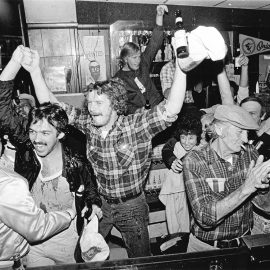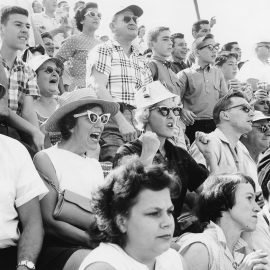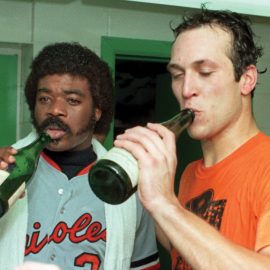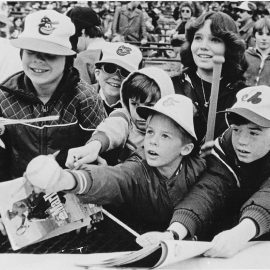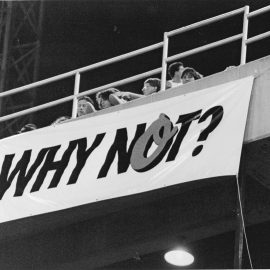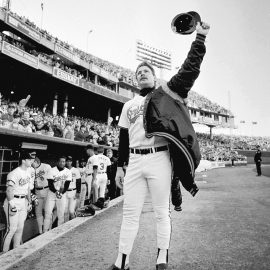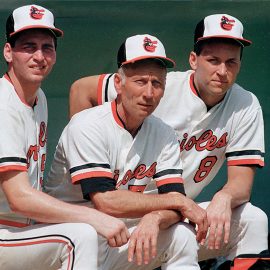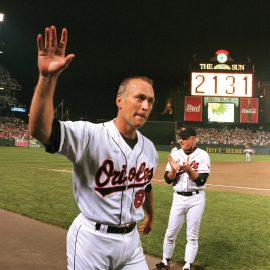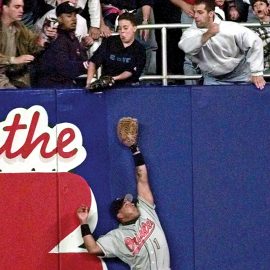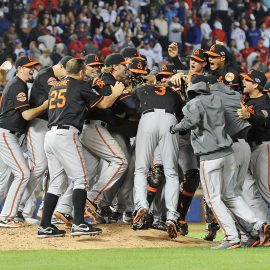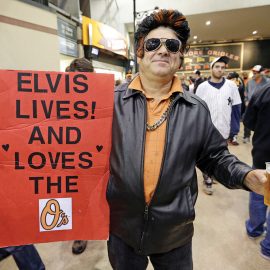Sports
Diamond Anniversary
As The Orioles mark 60 years at the plate, we take a look back through words and images.
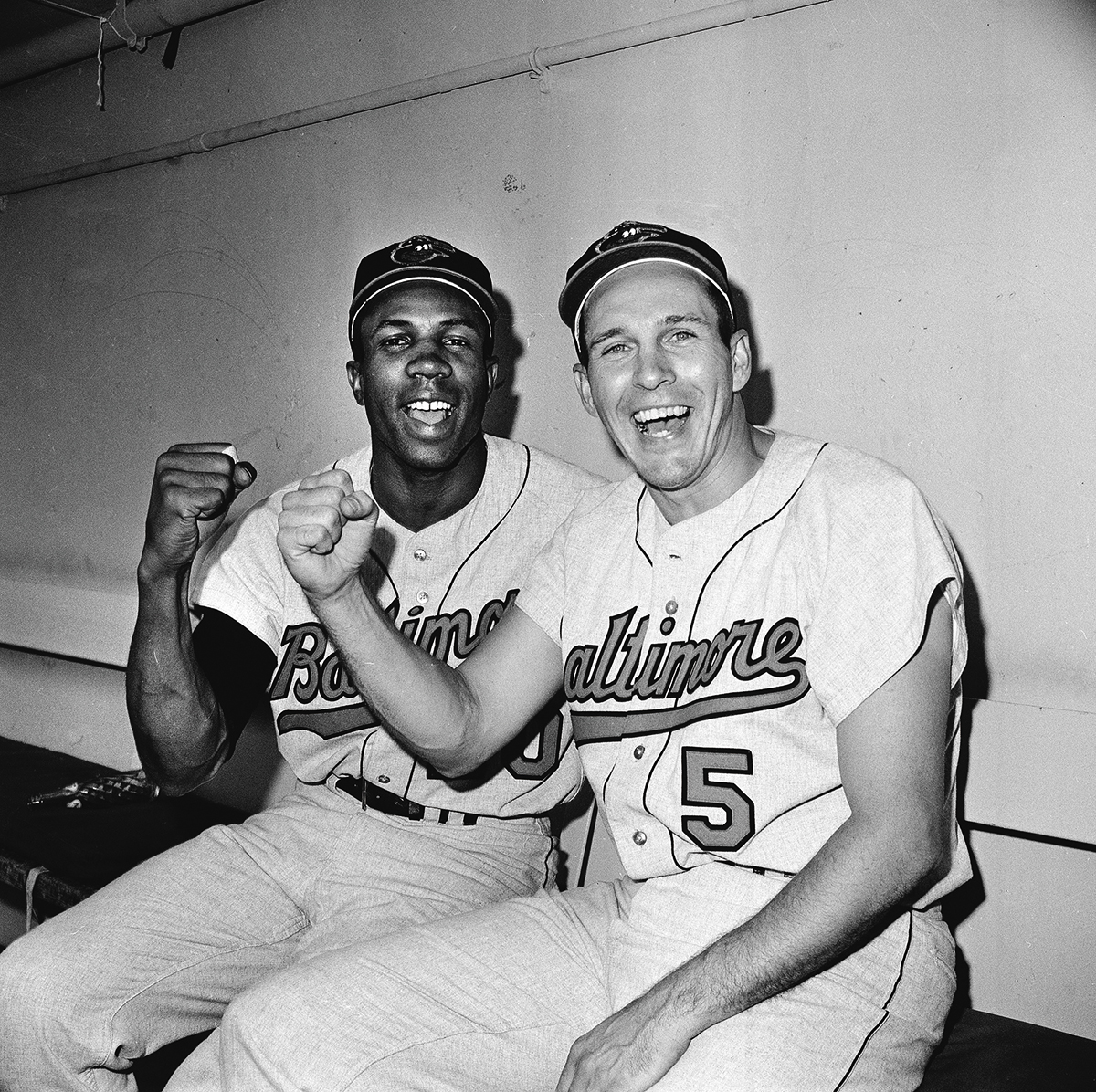
Essay by Jon Miller, 40-year veteran broadcaster, and the Orioles play-by-play man from 1983 to 1996.
“As a teenager in the 1960s, I was an Orioles fan primarily because of Brooks Robinson. It wasn’t Brooks’s statistics per se, it was the whole persona. I used to love to go to the Oakland Coliseum in the late 1960s really because I wanted to see Brooks. I couldn’t take my eyes off of him. He looked like somebody who didn’t want to be anywhere else—the way he ran onto the field, fielding grounders over to first. He was having the time of his life; there was a joyous aspect. He would inevitably make some spectacular play for which he was famous. He never disappointed. He would dive, charge a bunt, pull off a barehanded pick-up; he would do it all fluidly and beautifully. He turned playing third base into a ballet. The Orioles were also the best team going at the time. They had great players in Brooks, Frank, Boog, Davey Johnson and all those great pitchers, Mike Cuellar, Dave McNally, Jim Palmer—it was really a great team to watch. That’s what drew me to them.
I came to Baltimore in 1983 and stayed through 1996. Before that, I had done Red Sox games, and what I remembered was that, in Boston, there was a real feeling of negativity surrounding the Red Sox. No matter what good things they did, people were pessimistic. Here I come to Baltimore, and, the year before, the O’s lost in a pennant race, which was sort of a bitter disappointment. But what really stood out to me was, the day before opening day, the team had a workout, we all got into these buses and caravanned down to Harborplace, which was a fairly new thing at the time. We get down there, and I believe there were 40,000 to 50,000 people jammed into that area, as if the team had won it all the year before. It was a rally for opening day. There was a whole different feel from Orioles fans than I had encountered from Red Sox fans. Wild Bill led the fans in a couple of rousing cheers. It really gave me goosebumps. I couldn’t wait for opening day.
That team did not disappoint, obviously, and those Oriole cheers continued in the ballpark; Rick Dempsey would often do it from right outside the dugout. It was a scene that was unique to all of baseball. What I didn’t realize, even though they won the whole thing in ’83, was that we were all too close to the end of the run of that great group of players—near the end of Jim Palmer, and Ken Singleton, who had been a great run producer, really his last good year was 1983. A lot of those guys were getting older, and it was, ironically, when Cal Ripken was blossoming. But it was almost the end of that era. The next year, only Eddie and Cal had good years. Some players were older and near the end of their careers. In ’85, they signed free agents, which was a new thing for them. The pitching, which had been the foundation, started looking old for the first time. The team hit well, but the pitching turned very poor. They weren’t even a contender. In 1986, they fell completely into disrepair and had a losing record for the first time in 18 years. The plunge had begun in earnest [capped off by] the 1988 season when we lost 21 straight games to lead off the year, obliterating all records of futility.
But one of my most memorable times occurred in that year, when they came back from a road trip and their record was 1-23, which sounded worse than if they hadn’t won at all somehow. But the fans, through a grassroots level, had formed their own special night at the ballpark. It all started a week-and-a-half prior on a radio station [98 Rock]—a woman called in saying she felt so bad for the guys, every time she turned on the TV, The Tonight Show was making jokes about the Orioles. She said, “I just wish I could tell them all that we’re still behind them. It hasn’t affected our affection for them. They’re still our Orioles, and we love them.” The DJ, Bob Rivers, said, “Maybe you should all go to the game when they get home Monday.” He became sort of the point man for the whole thing. There was this huge run on tickets for that game—they ended up calling it “Fantastic Fan Night”—and it was an extraordinary outpouring of affection. The sold-out ballpark had the same feeling as the World Series that night, and they destroyed the Rangers 9-4. I don’t believe I’ve ever seen a game where the fans were the ultimate difference.
I miss Camden Yards. It’s such a great place. I remember the first time we saw it in 1992 when we took the buses over to the ballpark and, instead of just waiting for our bags, everybody to a man on the ball club walked through the tunnels to get a look. It didn’t even seem real. There were just a few lights on; it was nighttime. There was the big warehouse, which just hovered over the scene. The place looked beautiful and surreal at the same time. I also miss watching Cal Ripken and knowing his name would be in the lineup every single day. Cal was a lot of fun to watch—he was always tinkering with his batting stance and never felt like he was a big star. He was always looking for a better way and was out there for every batting and infield practice. He was a stickler for preparation. I don’t think any of us will see anything like that ever again.
After that, there was such a long period of futility, and Orioles fans were not used to that. I think there was just a lot of, not just despair, but ultimately anger that things could have turned out so poorly. Then, all of a sudden, this team showed it’s for real in 2012. As we got into the summer and they kept on doing it and you saw Buck Showalter’s magic, the crowds came back. Not with a Wild Bill Hagy cheer, per se, but with entirely new things. This thing was dormant, but these fans’ affections had never left, they were just waiting for any reason to be unveiled again.”
